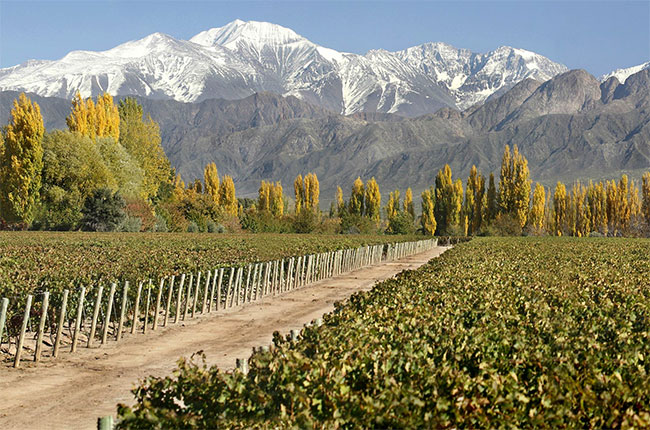A select band of producers in Chile and Argentina offer wines acknowledged as the pinnacle of what’s possible in their locations. Yet cult status still has to be earned, says Anthony Rose.
Almost by definition, any wine that has icon status conferred on it by its own producer is not an icon. As Achaval Ferrer’s Julio Lasmartres puts it, the status of icon is ‘not something that you can name by your own judgement, but a recognition which can only be given to you by customers, trade and press’.
An individual expression of terroir is the sine qua non of an icon wine, and along with it, legitimacy, prestige, longevity and recognition by the market, although the weighting to be applied to each may vary.
For example, Catena has forged its icon status in Argentina thanks to the remarkable vision of its owner.
Much the same can be said of Eduardo Chadwick’s Viñedo Chadwick in Chile. Seña with Mondavi, Almaviva with Mouton, Clos Apalta with Marnier Lapostolle and Cheval des Andes with Cheval Blanc are the highest-class expressions of the dovetailing of two cultures.
The consistent track record of Chile’s Don Melchor and Casa Real confers a genuine, home-grown legitimacy on these two stalwarts.
In the cases of Argentina’s Noemía, Chacra and Achaval Ferrer, an ancient vineyard, coupled with European prestige, has resulted in remarkable wines.
By corollary, the relative youth of Paul Hobbs’ Cobos Malbec Chañares Vineyard and Zuccardi’s Piedra Infinita gives them both icon-in-the-making status.
The wines: Full tasting notes available to Decanter Premium members
Fact File: The wines at a glance
Almaviva
Chile
First vintage 1996
Blend Cabernet Sauvignon, Carmenere, Cabernet Franc, Petit Verdot, Merlot
Average annual production 11,670-15,000 cases
Clos Apalta
Chile
First vintage 1997
Blend Merlot, Cabernet Sauvignon, Carmenere, Petit Verdot
Average annual production 2,500-12,000 cases
Viñedo Chadwick
Chile
First vintage 1999
Blend 100% Cabernet Sauvignon
Average annual production 400-1,000 cases
Don Melchor
Chile
First vintage 1987
Blend Cabernet Sauvignon, Cabernet Franc (in vintages since 2009)
Average annual production 13,500 cases
Seña
Chile
First vintage 1995
Blend Cabernet Sauvignon, Carmenere, Malbec, Petit Verdot, Cabernet Franc
Average annual production 4,000-6,000 cases
Casa Real
Chile
First vintage 1989
Blend 100% Cabernet Sauvignon
Average annual production 2,500 cases
Piedra Infinita
Argentina
First vintage 2012
Blend 100% Malbec
Average annual production 300 cases
Finca Altamira
Argentina
First vintage 1999
Blend 100% Malbec
Average annual production 830 cases
Noemía
Argentina
First vintage 2001
Blend 100% Malbec
Average annual production 400 cases
Cincuenta y Cinco
Argentina
First vintage 2004
Blend 100% Pinot Noir
Average annual production 1,400 cases
Nicolás Catena Zapata
Argentina
First vintage 1997
Blend Cabernet Sauvignon, Malbec
Average annual production 3,500 cases
Chañares Vineyard Malbec
Argentina
First vintage 2014
Blend 100% Malbec
Average annual production 250 cases
Cheval des Andes
Argentina
First vintage 1999
Blend Malbec, Cabernet Sauvignon
Average annual production 5,000-6,600 cases
Related content:

Australia’s finest: Langton’s Top 40
Australia's finest wines, by Sarah Ahmed...

Inside Cheval des Andes – A New World ‘grand cru’
Jane Anson interviews the team behind Cheval des Andes...

How Seña changed the Chilean wine landscape
The Chilean wine landscape used to be very different....












